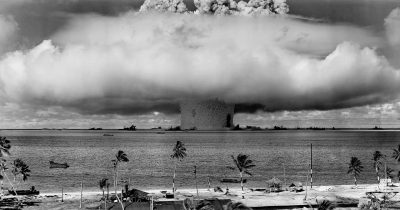Oklo Nuclear Reactor: Natural Wonder or Ancient Science?

Africa’s Ancient Nuclear Reactor: Natural Wonder or Lost Science?
Two billion years ago, something incredible happened deep beneath the ground in Gabon, Central Africa.
A uranium deposit, tucked away in the region of Oklo, didn’t just sit there. It came alive. It began to react. It created what scientists now describe as a natural nuclear reactor.
Yes, nuclear fission, the process we use today to generate massive amounts of energy in controlled environments, occurred naturally. Or so we’re told.
It was a discovery that shook the world of nuclear science. In 1972, French scientists stumbled on the phenomenon. Uranium samples from Oklo were sent for routine testing. But something was off. They had far less of a specific isotope (Uranium-235) than expected.
Was it stolen? Had it been used in weapons? These questions triggered a full-scale investigation.
What scientists found shocked the world. The uranium ore had the signature of having undergone nuclear fission, just as it would in a man-made nuclear reactor. But this wasn’t a facility built by engineers. There were no power plants, no technology, no known builders.
Just nature… apparently.
A Reactor with Supernatural Precision: Coincidence or Calculated Design?
The Oklo reactor wasn’t small. It stretched across a vast underground zone with at least 15 reaction sites. It operated, according to studies, for over 500,000 years. That’s not a typo—half a million years of sustained nuclear reaction.
Even more mind-boggling? The radioactive waste stayed exactly where it was formed, contained neatly in rock layers of granite, clay, and sandstone, all within a ten-foot radius. No leaks. No contamination. No environmental meltdown.
Modern science still struggles to replicate such precision.
To accept the official story, you’d need to believe in a series of extraordinary coincidences:
-
The uranium just happened to be pure enough.
-
The deposits were large enough to reach critical mass.
-
Water filtered through the rocks at the right rate to moderate the reaction.
-
The water was also unnaturally pure—more so than what exists in nature today.
-
The reaction generated enough heat to stop itself, only to start again after cooling.
-
This cycle continued in perfect balance for thousands of centuries.
Oh, and it didn’t happen once. It happened 15 times.
Hard to swallow, right?
Scientists or Storytellers?
The Oklo phenomenon has been a topic of discussion at countless international energy conferences. The International Atomic Energy Agency has studied it. Nuclear physicists marvel at it.
Still, they stand by the claim that it’s a “natural” event. A lucky accident of chemistry and geology.
Yet, the same scientific community credits ancient Egyptians for engineering marvels like the pyramids—and rightly so. They admire the Mayans for their astronomical precision. So why is the Oklo reactor, with its unmatched design and waste containment, chalked up to luck?
Is it because it’s in sub-Saharan Africa?
What if we’re looking at evidence of lost knowledge—perhaps of a civilization long forgotten or misunderstood? Could there be ancient intelligence that science has yet to acknowledge?
The reactor has become known as a “two-billion-year experiment.” Researchers try to replicate its natural containment systems. But the odds that it occurred without intention still baffle even the most rational minds.
Maybe we need to expand the way we see history. Maybe Africa holds more secrets than the world is ready to admit.
Because when you look closely at the numbers, nature alone doesn’t seem like enough of an explanation.
===================
Watch the Short Video
If you liked this story, you will also like African Art That Shook the Western World
